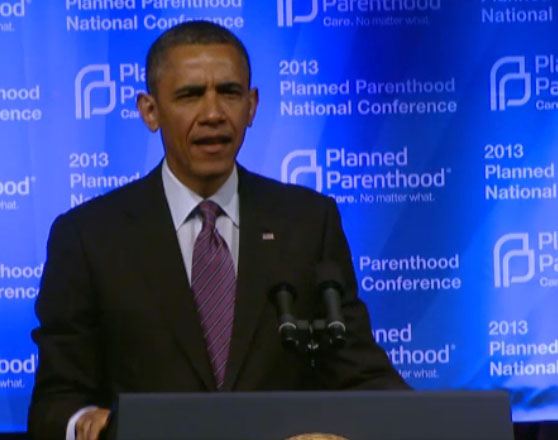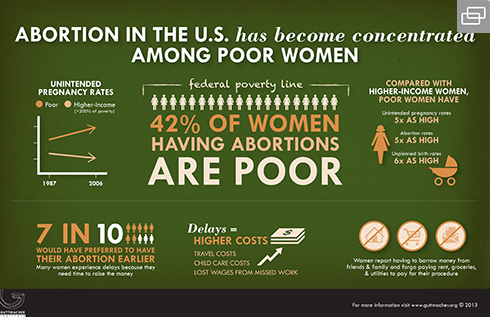Are All the Women Still White? Kermit Gosnell, “Back Alley” Abortions, and the Politics of Motherhood
By j.n. salters
Last week, Kermit Gosnell—the African-American “late-term abortionist” who delivered live babies and then stuck scissors in the backs of their necks and “snipped” their spinal cords in his West Philadelphia “house of horrors”—was sentenced to three consecutive life sentences in the deaths of three babies, the overdose death of a patient, and hundreds of abortion law violations. Stephen Massof, an unlicensed medical school graduate and former Gosnell employee, testified that the Philadelphia abortion mill “would rain fetuses.” The opening paragraph of the 2011 grand jury report offers additional details:
This case is about a doctor who killed babies and endangered women. What we mean is that [Gosnell] regularly and illegally delivered live, viable, babies in the third trimester of pregnancy—and then murdered these newborns by severing their spinal cords with scissors. The medical practice by which he carried out this business was a filthy fraud in which he overdosed his patients with dangerous drugs, spread venereal disease among them with infected instruments, perforated their wombs and bowels—and, on at least two occasions, caused their deaths. Over the years, many people came to know that something was going on here. But no one put a stop to it.
But why did no one put a stop to Gosnell’s “baby charnel house,” in which “a stench of urine filled the air” and “semi-conscious women scheduled for abortions were moaning in the waiting room or the recovery room, where they sat on dirty recliners covered with blood-stained blankets”? Both Planned Parenthood and the National Abortion Federation (NAF) knew about Gosnell’s “house of horrors,” yet did not report any of the illegalities. The facility had not been inspected in over 17 years, with the exception of a visit by an evaluator from the NAF in 2009, who denied Gosnell’s application for membership, yet did not report any of the health code violations that were discovered (i.e., death of a patient, filth, lack of an effective security system, padlocked emergency exit in the part of the clinic where women were left unattended overnight, lack of licensed personnel to administer anesthesia, etc.). Dayle Steinberg, president and CEO of Planned Parenthood of Southeast Pennsylvania, admitted that Philadelphia’s Planned Parenthood facility received complaints about Gosnell, which prompted Planned Parenthood staff to “encourage [those complaining] to report [Gosnell] to the Department of Health.”
Journalists, abortion activists, and casual news consumers attribute several theories to this neglect, as well as to the case’s lack of media attention—including its ghastliness, the liberal stance of many journalists, and the graphic testimony’s threat (or perceived threat) to abortion rights. Midway through the two-month trial, anti-abortion activists accused mainstream media of undercovering the case because it reflected badly on the abortion rights cause. “This has helped more people realize what abortion is really about,” says David O’Steen, executive director of the National Right to Life Committee.
Supporters of legalized abortion, on the other hand, believe the case offers a “preview of what poor desperate young women could face if abortion is driven underground with more restrictive laws.” Pro-choice legal scholars also cite the state’s failure to recognize abortion as health care as the primary reason the events transpired. “By and large, our policymakers have never viewed abortion as a medical procedure—instead placing it under the Pennsylvania Criminal Code—and therefore haven’t nurtured a system of abortion care that is woman-focused,” write Carol Tracy and Susan Frietsche of the Women’s Law Project.
Unlike the majority of publications on the matter that have ignored the oppressive intersections of race, gender, and class, the grand jury report mentions race and poverty as two key reasons for the neglect:
Bureaucratic inertia is not exactly news. We understand that. But we think this was something more. We think the reason no one acted is because the women in question were poor and of color, because the victims were infants without identities, and because the subject was the political football of abortion.
Similarly, I contend that the lack of Gosnell coverage, as well as the ability for such heinous, negligent acts to occur for nearly two decades with little outrage from the medical community and the nation, reflects historicized myths deeply embedded in America’s consciousness that poor women, especially poor women of color (Gosnell’s patients were mostly low-income African-American and immigrant women), are not human beings and therefore not entitled to equal protections and rights under the law. Borrowing from Salon’s Irin Carmon:
How often do such places [major news organizations] devote their energies to covering the massive health disparities and poor outcomes that are wrought by our current system? How often are the travails of the women whose vulnerabilities Gosnell exploited—the poor, immigrants and otherwise marginalized people—given wall-to-wall, trial-level coverage?
Both the media and Gosnell are continuing a national “separate and unequal” tradition that privileges whiteness at the expense of the valuation of people of color. According to court testimony, Gosnell routinely turned his poor black patients over to assistants who lacked even a high school education, while seating his white patients separately and personally treating them. A former employee testified that “white patients often did not have to wait in the same dirty rooms as black and Asian clients. Instead, Gosnell would escort them up the back steps to the only clean office—O’Neill’s—and he would turn on the TV for them.” She adds: “He didn’t mind you medicating your African American girls, your Indian girl, but if you had a white girl from the suburbs, oh, you better not medicate her. You better wait until he go in and talk to her first. And one day I said something to him and he was like, that’s the way of the world. Huh?” According to CNBC contributor Gina Sanchez, the patients “who were predominately of low socioeconomic status suffered perforated uteruses, septic shock, pieces of fetal tissue left behind after surgery and death; they contracted venereal diseases, delivered babies in toilets and left there for hours, had photographs of their genitalia taken by Gosnell, and seizures during unmonitored anesthesia.” I cannot help but liken these privacy invasions to the maltreatment of Dr. Nikita Levy’s patients, mostly poor women of color, who were illegally and unknowingly photographed and videotaped by the African-American Johns Hopkins obstetrician-gynecologist in his East Baltimore clinic.
To this day, there remains an underacknowledgement of the intersecting role of race and poverty in persistent racial and ethnic health disparities, the anti-abortion agenda, and the maltreatment of Gosnell’s patients and employees.[1] According to the grand jury report, Gosnell catered to women “who couldn’t get abortions elsewhere—because they were too pregnant.” While this may be partly accurate, it fails to address the underlying structural issues that push low-income women and women of color toward unsafe and unlawful abortions. As longstanding victims of coerced and forced sterilizations, unwitting medical experiments, and unequal access to high-quality affordable healthcare, women of color in the United States have only been deemed worthy of motherhood when forced to breed slave labor forces and serve as hospital experiments.[2] As a result, many women of color continue to lack reproductive freedom and are seen as undeserving of the right to safe, high-quality abortion services (according to 2009 poll, 48 percent of Americans want a ban on coverage for abortion in any government-funded health care plan, while only 13 percent believe that it should be covered).[3] Thus, women of color often seek cheap, unsafe alternative abortion methods, such as Gosnell’s “snipping” technique.
“Would women have gone to the Women’s Medical Society if Pennsylvania paid for abortion with Medicaid funds? Would they have had late procedures if they could have afforded earlier ones?” asks Katha Pollitt in a 2011 article in The Nation. I find myself asking these questions as well as others regarding the Gosnell case, its coverage, and lack thereof: Why has the majority of Gosnell coverage focused on the story’s lack of national media attention and the ways in which Gosnell treated “his youngest victims” as if they were “subhuman” and “not entitled to any protection under the law,” yet ignored the inhumane treatment of the women patients? According to the grand jury report, Gosnell “overdosed his patients with dangerous drugs, spread venereal disease among them with infected instruments, perforated their wombs and bowels—and, on at least two occasions, caused their deaths.” Philadelphia Health Commissioner Donald Schwartz testified that he observed a pattern of his patients becoming infected with Trichomoniasis, a sexually transmitted parasite, after appointments at Gosnell’s clinic, yet Schwartz did not check into Gosnell’s clinic. Did Schwartz, Planned Parenthood, and the NAF fail to report these concerns and illegitimate practices out of fear of the potential implications on abortion policy and/or a blatant lack of concern for women of color? Maybe no one cared because this could simply be construed as yet another example of “black-on-black” crime? Or, maybe Planned Parenthood was implicitly continuing founder Margaret Sanger’s eugenically-driven mission of “weeding out the unfit, of preventing the birth of defectives or those who will become defectives”?[4] Regardless of the reasoning behind the neglect, the failure to report Gosnell’s life-threatening procedures is shameful and merciless, especially considering that the stated mission of the NAF is to “help ensure women have access to safe, legal abortion care.” I guess by “women,” the NAF means middle- and upper-class white women? Are all the women still white?
Pro-choice America released a statement on May 13, 2013, immediately following the Kermit Gosnell verdict. In the statement, Illyse Hogue, president of NARAL Pro-Choice America, asserts:
Kermit Gosnell has been found guilty and will get what he deserves. Now, let’s make sure these women are vindicated by delivering what all women deserve: access to the full range of health serves including safe, high-quality and legal abortions.
 I am a proponent of ALL women having equal access to safe and ethical healthcare, especially access to safe, high-quality abortions and birth control. But I am quite frustrated that once again, the unique ways in which debates over motherhood and fetal rights uniquely affect poor women of color—who experience various forms of oppression simultaneously—are being relegated to the sidelines in an attempt to push for “all” women’s equality. While this tactic may seem advantageous to some, can we truly fight for “all” women’s equality without acknowledging the heterogeneity of our experiences based on factors such as race, ethnicity, socioeconomic status, and geographic region? Can we thoroughly debate concerns over state intervention in matters of motherhood without taking into account the race of the women involved? Is Hogue just continuing the apathetic white feminist tradition of failing to acknowledge the oppressive intersections of race, gender, and class faced by women of color? Will Gosnell’s victims really be “vindicated” in NARAL Pro-Choice America’s attempts to deliver what “all” women deserve?
I am a proponent of ALL women having equal access to safe and ethical healthcare, especially access to safe, high-quality abortions and birth control. But I am quite frustrated that once again, the unique ways in which debates over motherhood and fetal rights uniquely affect poor women of color—who experience various forms of oppression simultaneously—are being relegated to the sidelines in an attempt to push for “all” women’s equality. While this tactic may seem advantageous to some, can we truly fight for “all” women’s equality without acknowledging the heterogeneity of our experiences based on factors such as race, ethnicity, socioeconomic status, and geographic region? Can we thoroughly debate concerns over state intervention in matters of motherhood without taking into account the race of the women involved? Is Hogue just continuing the apathetic white feminist tradition of failing to acknowledge the oppressive intersections of race, gender, and class faced by women of color? Will Gosnell’s victims really be “vindicated” in NARAL Pro-Choice America’s attempts to deliver what “all” women deserve?
In the article “Punishing Drug Addicts Who Have Babies: Women of Color, Equality, and the Right of Privacy,” reproductive justice legal scholar Dorothy Roberts discusses the ways in which the prosecution of drug addicts who have babies—predominately poor black women—violates their constitutional rights to equal protection and privacy regarding their reproductive choices. Roberts places these prosecutions in the context of the historical devaluation of black women as mothers, and notes that poor women of color “are the least likely to obtain adequate prenatal care, the most vulnerable to government monitoring, and the least able to conform to the white, middle-class standard of motherhood. They are therefore the primary targets of government control.”[5] While Gosnell’s clinic was not effectively monitored by the state and his patients were punished for seeking abortions rather than carrying their pregnancies to term, the mistreatment of these women and their fetuses is quite similar to the hypersurveillance and punishment of drug addicts who have babies. These State responses represent the perpetual neglect of black children and the historical devaluation of women of color as mothers by denying them “a facet of their humanity by punishing their reproductive choices.”[6] This is yet another example of the ways in which we continue to punish poor women of color rather than provide the means for them to either have safer abortions or healthier pregnancies.
Rather than use the Gosnell trial as an opportunity to push for “pro-life” legislation or merely focus on giving “all” women equal access to healthcare, we must first recognize that all women deserve to be treated like human beings, regardless of race, ethnicity, or socioeconomic status. Then we can address the fact that, in the words of feminist Gloria Steinem, “reproductive freedom is a fundamental human right,” and all abortion clinics—whether they are on Rodeo Drive or Malcolm X Blvd.—should be treated like any other medical facility and each patient should be treated as if we truly live in a “post-racial, post-feminist” society. While Gosnell’s victims may not “look like” Sasha or Malia Obama, the president and the rest of America should still care about the exploitation of poor women of color’s inability to afford safe, legal abortions and lack of access to contraception.[7] Furthermore, as Dorothy Roberts illustrates, we need to incorporate a discourse of racial equality and privacy when advocating the reproductive rights of women of color to reveal the ways in which the government continues to systematically exclude women of color “from tangible and intangible benefits enjoyed by white society” and the role of “a shared societal norm—the devaluation of black motherhood—that perpetuates the social conditions discussed above.”[8]
A commitment to recognizing the worth and humanity of ALL women is vital if we truly seek to end the “war on women.” In the words of Alice Walker, “only justice can stop a curse.”
[1] See Killing the Black Body: Race, Reproduction, and the Meaning of Liberty (1998) by Dorothy Roberts; Women of Color and the Reproductive Rights Movement (2003) by Jennifer Nelson; Undivided Rights: Women of Color Organize for Reproductive Justice (2004) by Jael Sillimen, et. al., and Body and Soul: The Black Panther Party and the Fight Against Medical Discrimination (2011) by Alondra Nelson.
[2] In Body and Soul: The Black Panther Party and the Fight Against Medical Discrimination (2011), Alondra Nelson focuses on the Black Panther Party’s struggle for equal access to health care to illustrate the ways that black women have resisted racial science and medical oppression.
[3] Only seventeen states pay for the procedure for poor women beyond the standards of the 1977 Hyde Amendment—meaning if the woman’s life is in danger or she’s been the victim of rape or incest. Just two months before the health-care bill’s passage in the House, a Rasmussen poll found that 48 percent of the public didn’t want abortion covered in any government-subsidized health plan, while just 13 percent did.
[4] Margaret Sanger, Women and the New Race (New York: Blue Ribbon Books, 1920), 105.
[5] Dorothy E. Roberts, “Punishing Drug Addicts Who Have Babies: Women of Color, Equality, and the Right of Privacy,” Harvard Law Review 104, no. 7 (1991), 1422.
[6] Ibid., 1423.
[7] In March 2012, President Obama responded to a question about the murder of unarmed 17-year-old Trayvon Martin, who was shot and killed by white neighborhood watch captain George Zimmerman in 2012. Part of his speech reads: “My main message is to the parents of Trayvon Martin, you know, if I had a son, he’d look like Trayvon…And you know, I think they [Trayvon Martin’s parent] are right to expect that all of us as Americans are going to take this with the seriousness it deserves, and we’re going to get to the bottom of exactly what happened.”
According to White House Press Secretary Jay Carney, “the president is aware of [the Gosnell trial]. The president does not and cannot take a position on an ongoing trial.” (http://cnsnews.com/news/article/wh-won-t-comment-gosnell-maintains-obama-s-support-abortion)
[8] Roberts 1991, 1454-55.
_____________________________________________________________
 j.n. salters is a black feminist, writer, and doctoral student at the Annenberg School for Communication at the University of Pennsylvania. She’s interested in the intersections of race, gender, class, and sexuality in rights to privacy, black cultural production, identity politics, sex work, law and criminal justice, and visual culture.
j.n. salters is a black feminist, writer, and doctoral student at the Annenberg School for Communication at the University of Pennsylvania. She’s interested in the intersections of race, gender, class, and sexuality in rights to privacy, black cultural production, identity politics, sex work, law and criminal justice, and visual culture.






8 Comments